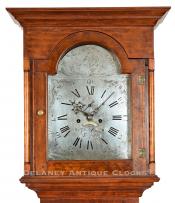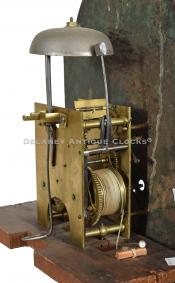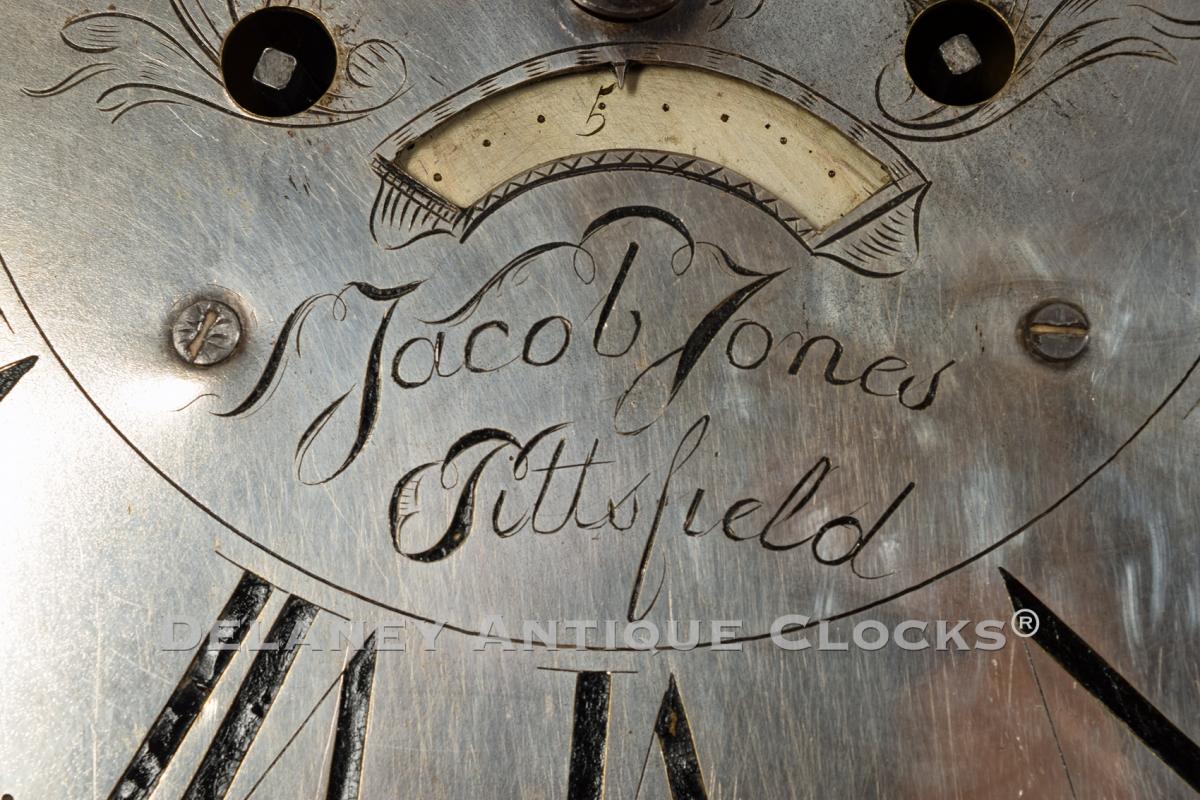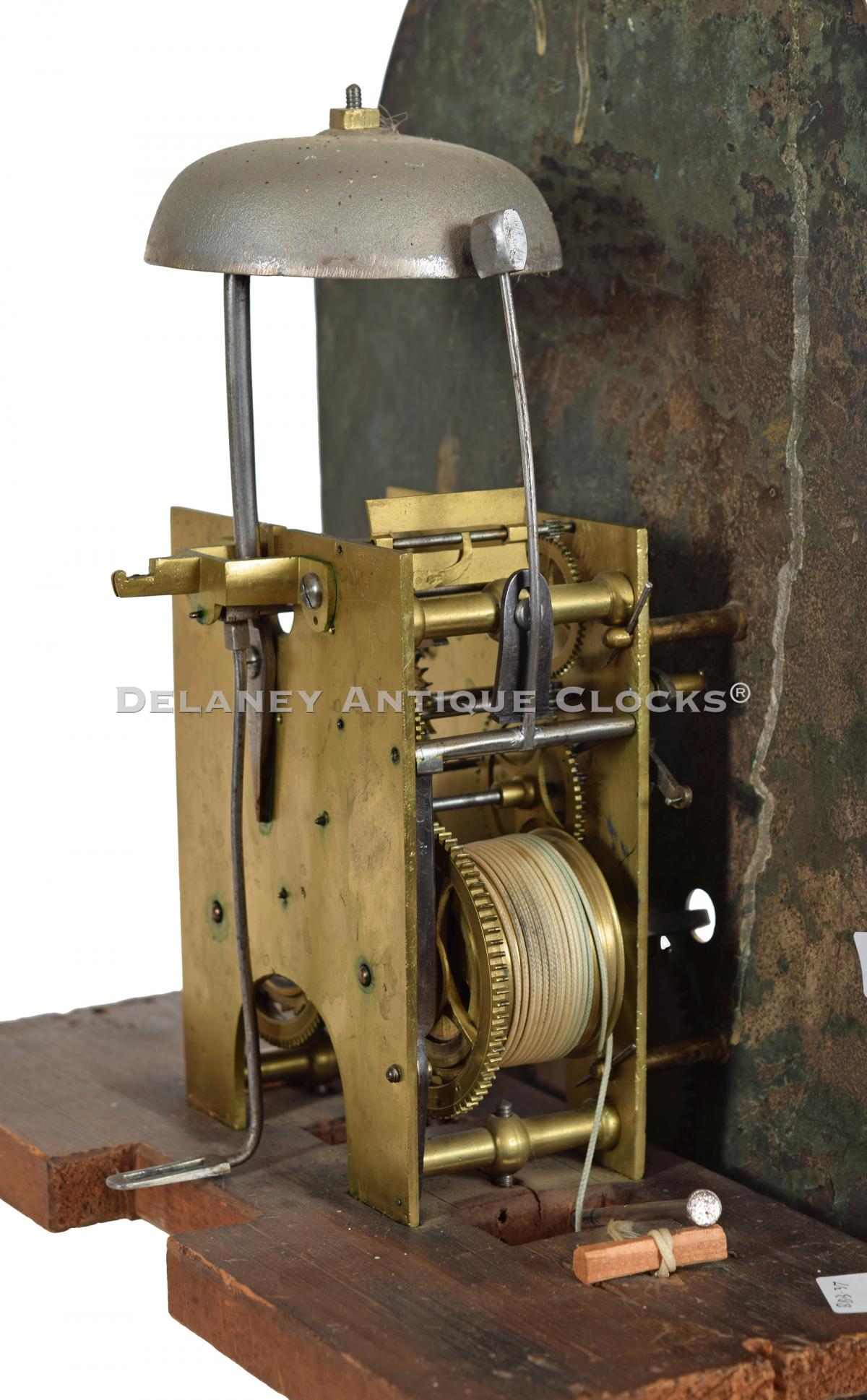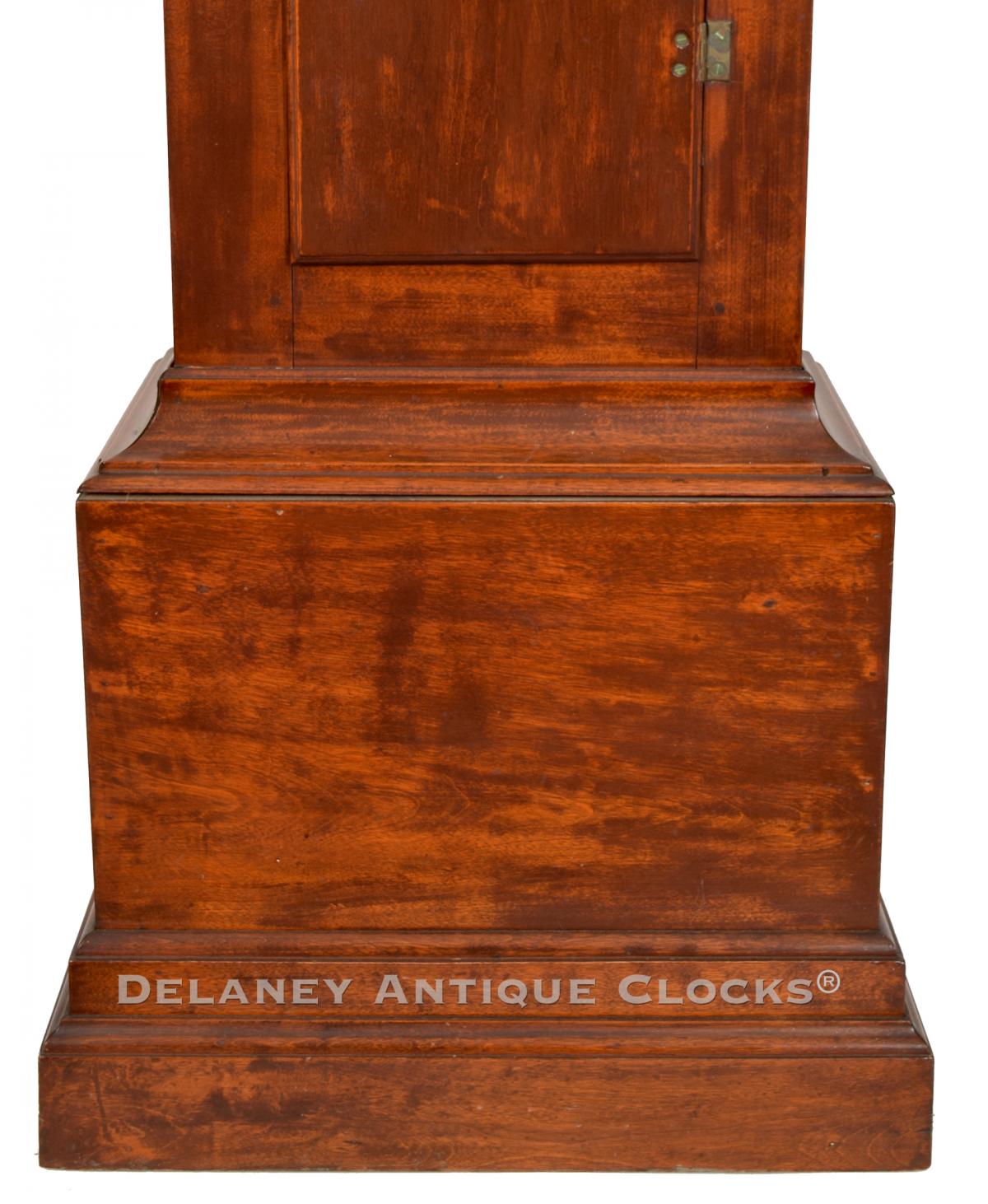Jacob Jones of Pittsfield, New Hampshire. This tall clock represents a fine country form. BBB-37.
Jacob Jones of Pittsfield, New Hampshire, made this birch case tall clock.
Jacob Jones was born on December 30, 1749, in Kingston, New Hampshire. He was the son of John Jones (1724-1815) and Hannah Dow (1728-1806). Jacob had a brother John Jr. who is also listed as a clockmaker. Jacob married Mary Dow. They had at least one son, Jacob Jr., who was also a clockmaker. Jacob had a foundry in the Doeboro district of Pittsfield, NH. Here he cast the brass he used to manufacture his clocks. Jacob died in Pittsfield on July 25, 1839. In his book New Hampshire Clockmakers, Charles Parsons reports that fifteen tall case examples are known to have survived by this Maker. It is not known if this is one of those examples. The Currier Museum of Art in Manchester, NH, has a very good example in its collection. Their clock features an engraved dial and a lovely tiger-maple case. It was thought to have been made circa 1785. We have recorded two other engraved sheet dial clocks. One of which is engraved with the date 1792 in the arch. Interestingly, the engraving on the two dials appears to be of different hands.
The tall clock case is constructed in birch and retains its original mahoganized/red wash staining. This is a treatment that was very popular in the southeastern region of New Hampshire. Many light wood cases were finished in this manner in an attempt to simulate the colors and shading of cherry and mahogany. Mahogany is an imported wood that, at this time, may have been difficult to come by. The case rests on a double-step molding that is applied to the bottom of the base. This base was never fitted with feet. The waist section features a simple tombstone-shaped access door. This door provides access to the two drive weights and the brass-faced pendulum bob. The bonnet is simply formed. Fully turned hood columns flank the arched door. The top of the hood features a broadly shaped cornice molding. The hood door is arched and fitted with glass. It opens to access the dial.
This brass engraved dial exhibits the unusually fine workmanship of an unidentified dial maker. The brass was hammered by hand into a thin flat sheet. The decorations were then engraved into the front surface. These designs are filled with shellac or wax, and the front surface is treated with a silver wash. The silver compound adheres to the exposed brass surfaces, thus creating a stark contrast between the applied silver and the dark black filler that remains inside the engraved decorations. Please note how wonderfully decorated this dial is presented. The lunette's circular frame features a bird and the date "1792." Lacy floral decorations help center this medallion. The main section of the dial is decorated with slash work around the perimeter. The four spandrels are decorated with floral themes. The time ring is traditionally formatted. Thinly formed Arabic-style numerals mark the five-minute locations. A dotted minute ring separates them from the large Roman-style hour numerals. A subsidiary seconds dial and calendar display are positioned inside the time ring. This dial is signed below the calendar in script lettering, "Jacob Jones / Pittsfield." Additional floral designs, including tulips, are featured in this center section. The shaping of the steel hands is a reoccurring theme found on other Jones-signed dials.
This movement is constructed in brass and is of good quality. The plates are cast in brass and feature a high arch cut out in the bottom. This movement is weight driven and is designed to run for eight days on a full wind. It is a rack and snail time-and-strike design. As a result, it will strike each hour on the hour on a cast iron bell mounted above the movement. The lead pendulum bob is covered in brass. The front-facing of this bob is engraved with a floral design.
This clock stands 7 feet tall and was made in 1792. The hood is 23 inches wide and 11.25 inches deep.
Inventory number BBB-37.
Jacob Jones was born on December 30, 1749, in Kingston, New Hampshire. He was the son of John Jones (1724-1815) and Hannah Dow (1728-1806). Jacob was Trained as a clockmaker under the guidance of Daniel Balch of Bradford and Newbury, Massachusetts. Jacob married Hannah Cilley on January 1, 1774, in Pittsfield, NH. They had eleven children. Three sons worked in the clock trades. Joseph was born on March 37, 1775, and died on October 31, 1842. Jonathan Jones was born in Gilford, NH, on October 16, 1787. His death date is not known. Abner Jones, not to be confused with his third cousin Abner Jones of Weare, NH, was born on August 24, 1789, in Pittsfield, NH, and died in Avon, NY, on August 24, 1876.
Jacob had a foundry and workshop near the Quaker Meeting House in the Doeboro district of Pittsfield, NH. Here he cast the brass he used to manufacture his clocks. Jacob died in Pittsfield on July 25, 1839. In his book New Hampshire Clockmakers, Charles Parsons reports that fifteen tall case examples are known to have survived by this Maker. It is not known if this is one of those examples. The Currier Museum of Art in Manchester, NH, has an excellent example in its collection. Their clock features an engraved dial and a lovely tiger-maple case. It was thought to have been made circa 1785. We have recorded two other engraved sheet dial clocks. One of which is engraved with the date 1792 in the arch. Interestingly, the engraving on the two dials appears to be of different hands.


